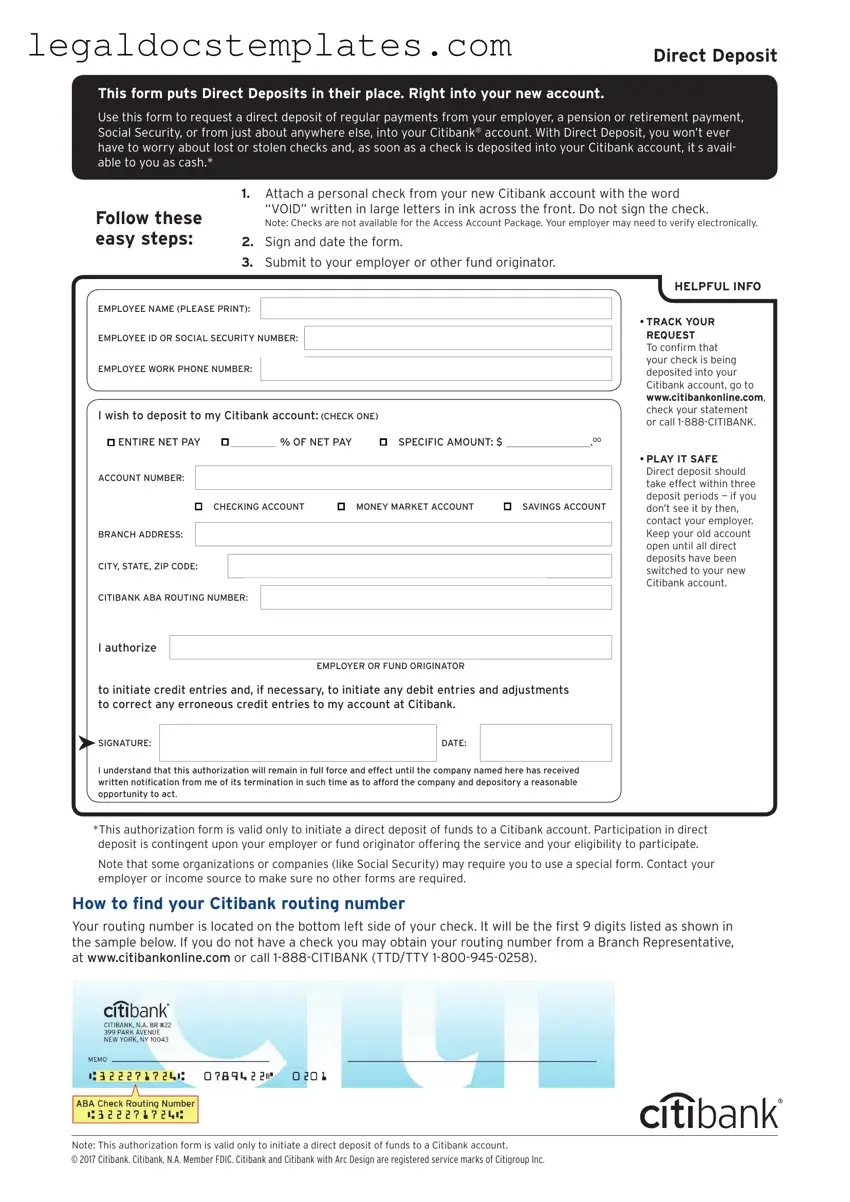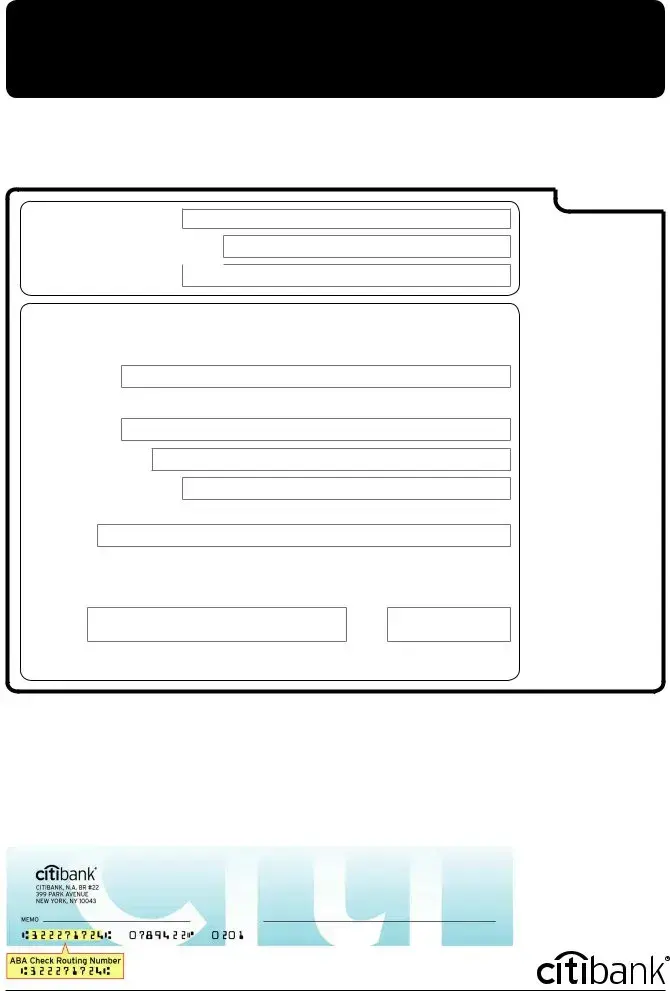The Citibank Direct Deposit form shares similarities with the Wells Fargo Direct Deposit form. Both forms are used by individuals to set up the electronic transfer of funds into their bank accounts. They typically require the account holder's name, bank account number, and routing number. These forms facilitate the automatic deposit of salaries, tax refunds, or other regular income, ensuring timely and secure payments without the need for manual handling or paper checks.
Another document resembling the Citibank Direct Deposit form is the IRS Form 8888, Allocation of Refund. This form also deals with direct deposits but is specifically used for tax refunds. It allows taxpayers to allocate their refund into up to three different accounts at U.S. financial institutions. Similarities include the need for detailed financial information such as account numbers and routing numbers to accurately process electronic fund transfers.
The Social Security Direct Deposit form also parallels the Citibank Direct Deposit form. This form enables recipients of Social Security benefits to have their payments directly deposited into their bank accounts. Like the Citibank form, it requires recipients to provide personal and banking information, streamlining the payment process and ensuring benefits are received promptly and securely.
An Employment Payroll Direct Deposit Authorization form found in many organizations mirrors the functionality of the Citibank Direct Deposit form. Employees use this form to request that their paychecks be directly deposited into their bank accounts. Both forms collect necessary banking details and serve to expedite the transfer of funds, thereby eliminating delays associated with paper checks.
Alike the Citibank Direct Deposit form, the Bank Account Change Request form is used when individuals need to update or change their banking information for direct deposits. Although primarily used for updating existing details, it similarly collects account and routing numbers to ensure the accurate processing of future electronic transactions.
The Brokerage Account Direct Deposit form, offered by investment firms and brokerages, is another document that resembles the Citibank Direct Deposit form. This form allows individuals to have dividends, interest, or proceeds from securities sales directly deposited into a specified bank account. It shares the requirement for precise banking information, including account and routing numbers, to accurately direct incoming funds.
Finally, the Utility Company Direct Debit form bears similarities to the Citibank Direct Deposit form, albeit for outgoing payments. This form authorizes the automatic withdrawal of funds from an individual’s bank account to pay utility bills. While it facilitates a different direction of funds, it similarly requires bank account and routing numbers to automate the payment process, ensuring timely and efficient bill payments without manual intervention.


 SIGNATURE:
SIGNATURE: